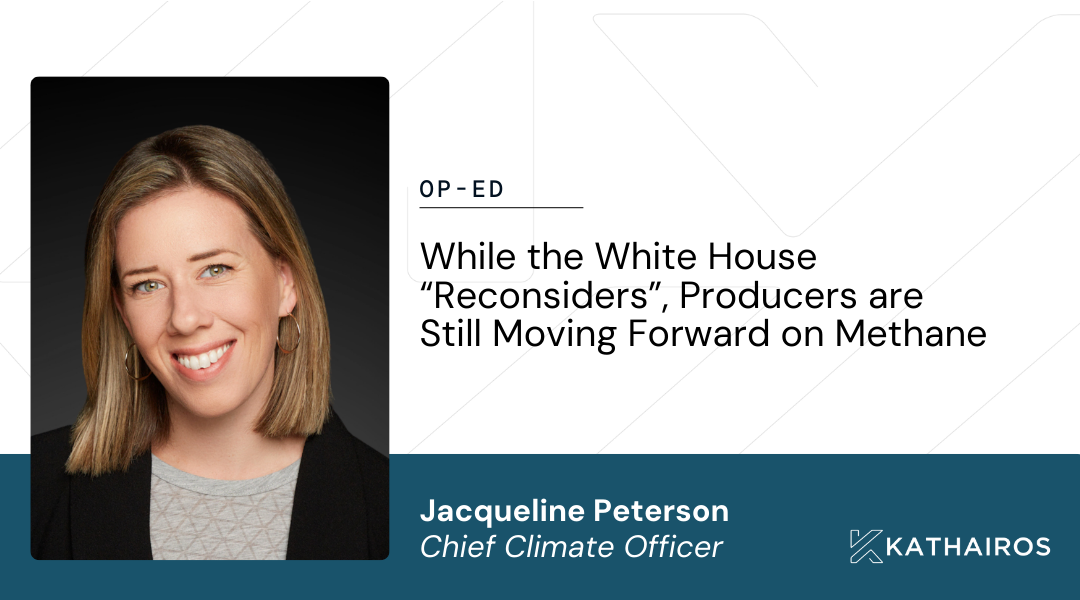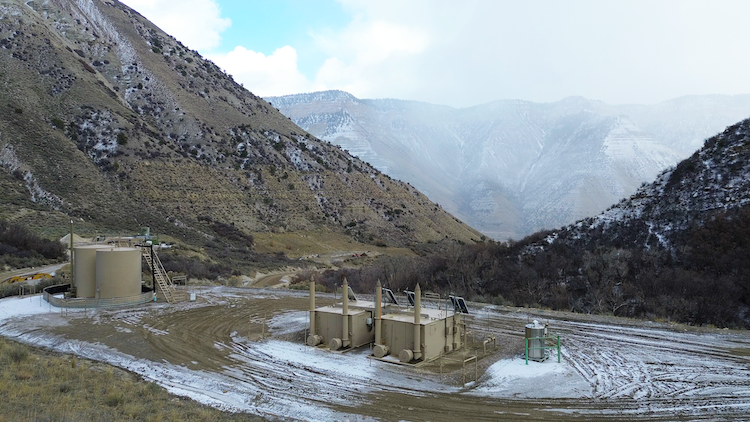
Kathairos has emerged as the leading North American solution for methane elimination from pneumatics, with more than 1,000 systems in operation across North America and over 40 major oil and gas producer partners.
In this post
There is no doubt that climate change is one of the biggest issues we are facing as a society, but there are plenty of actions we can take to minimize (and reverse) the damage. The most obvious way? Reducing our individual carbon footprint.
A carbon footprint refers to the total measure of greenhouse gases released into the atmosphere as a result of a person’s (or company, country, industry’s) activities. The smaller the footprint, the better for the environment.
Whether at home, at work or out in the world, small changes in our actions and behaviours can lead to a massive positive impact for the planet. Here are 10 simple ways to reduce your carbon footprint:
1. Choose local and organic
At least 13% of US greenhouse gas emissions result from the production and transport of food, which often uses petroleum-based and fuels, so this is a no-brainer: locally-grown and produced food takes less energy to transport and also supports the economy where you live!
2. Wash your clothing in cold water
Not only are cold water detergents incredibly efficient and better at cleaning clothes in cold-water, cold-water washing is a much less carbon-intensive process than washing clothes in hot water. In fact, even doing two loads of laundry in cold water instead of hot or warm water can reduce your annual carbon footprint by 500 pounds and reduce your washer’s emissions by 75%.
3. Use less water
Clean water requires a lot of energy and resources to process and deliver to our homes and takes even more energy to heat. Simple ways to reduce water usage include turning off taps when brushing teeth and taking shorter showers.
4. Turn off the lights
Powering empty rooms and spaces can be hugely energy-intensive, so make sure to turn off any lights you don’t need and unplug appliances not in use to avoid wasting power. Installing automatic, movement-sensing lights and energy-saving LED bulbs can be a great way to address this problem!
5. Go digital
In an era of Zoom conferences and online workspaces, there has never been a better time to collaborate with others digitally! Whenever possible, try to move away from printed documents in favour of sharing documents online using cloud storage. Opting for video conferencing instead of travelling to meet in person can also greatly reduce waste and emissions from unnecessary travel.
6. Compost
The simple act of composting can go a long way in reducing carbon footprint as it greatly reduces methane emissions in landfills resulting from the breakdown of food waste. Methane is 25x more efficient than carbon dioxide at trapping heat in the atmosphere, so any strategies that can reduce methane emissions can have a significant positive impact on the environment.
7. Pack a bottle
Having a reusable container for your water or coffee may seem inconsequential, but it tackles a huge area of concern: single-use plastics. Single-use plastics require a lot of energy to produce and recycle, so make a point to avoid using plastic cups and bottles in favour of reusable thermoses, cups and bottles.
8. Join Meatless Mondays
Livestock accounts for 14.5% of man-made greenhouse gas emissions, mainly from the production and processing of animal feed and the methane gas expelled by animals, especially cows. Opting to cut out meat and dairy for even a single day of the week can reduce your carbon footprint by 8 pounds: that’s 2,920 pounds a year!
9. Turn down the thermostat
Look, we get that -30°C is tough, but heating your home during the winter can be a major contributor to your carbon footprint. Challenge yourself to turn down the thermostat by a degree or two during the day, and even more during the night.
10. Buy second-hand
The way that most clothing is designed, manufactured and distributed results in enormous waste, pollution and energy expenditure. In fact, the UN estimates that the fast fashion industry alone is responsible for 10% of global greenhouse gas emissions. Reducing the amount of “fast fashion” you buy; choosing to buy second-hand or consignment; and purchasing from eco-friendly companies can help significantly reduce your environmental impact.
Explore more posts from Kathairos
.jpg)
Decarb Digest, Issue 01: Discover Why Energy Leaders Aren’t Waiting on Washington

Op-Ed: While the White House “reconsiders”, producers are still moving forward on methane

